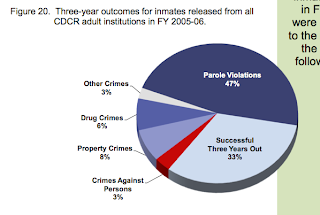Dear readers – this post is more of a personal reflection than a news item. I hope you will forgive the indulgence.
As you know, I’m in the process of putting together a benefit concert for SAFE California. I posted a link to the event page on Facebook, and invited everyone I could think of who lives in the San Francisco Bay Area. I hesitated to invite folks who disagreed with the message, but figured that I would be inclusive in the invitations and allow people to make up their own minds as to whom they would like to support.
A Facebook friend who is a former student declined the invitation and posted the following, verbatim:
“I would rather perform a labotomy [sic] on myself with a rusty butter knife than support this idiotic cause.”
After the initial personal shock – I think highly of my former student and our interactions in school had always been respectful despite our deep disagreements about criminal justice policy – I started thinking a bit about the pros and cons of framing issues through the broad, but shallow, prism of cost.
What the death penalty debate was in the European Enlightenment era – and should have been here – was a debate about the limited powers of the state, about proportionality in punishment, about retributivist and utilitarian punitive goals. We could fundamentally disagree on those perspectives, but all opinions could be heard and respected, and we would have a deep understanding of where our disagreements lay. I might not be a believer in retributivism, and I might think that many victims just suffer more through the capital punishment appellate process, but I understand why people value retributivism on a philosophical level, and I also understand that some victims do feel closure after the person who murdered their loved ones is executed. I still think the death penalty is rotten policy that has no place in modern life in its present form, but I don’t think that those who disagree with me are out of their minds.[1] Nor do I think we’re nearly done with that aspect of the debate.
In some ways, shifting the debate to issues of cost and technologies ameliorates these fundamental disagreements about the moral and ethical aspects. We don’t have to talk about human rights or retribution or victims’ feelings, because we can talk about money.
But money doesn’t make those big issues go away. It just buries them deep underground, so we can avoid discussing the real issues. And so, we lose our practice in respectfully debating our positions, our civil discourse muscles atrophy, and when we do lash out – usually on the Internet, because we’re oh-so-polite race to face – the rudeness and disrespect are overwhelming.
I understand the power of the fiscal argument. After all, I’m writing a book about the power of the fiscal argument and the immense systemic transformation it is already generating. It can convince conservative folks who believe in fiscal prudence to swing back the punitive pendulum, and it has already convinced many. But I think it’s an open question whether we’re paying a dear price for it. We’re giving up the opportunity to have a serious, thorough public debate about a fundamental moral question, and by doing so, we’re keeping, and perhaps deepening, our resentment and possibly hatred of our fellow Californians (those behind bars and those who disagree with us, regardless of where we stand.)
Perhaps the money argument isn’t as shallow as it seems. American independence started off with a quibble about empowerment and representation, but it was framed as a tax debate. We often use money as a proxy for values; as in, how much we are willing to spend on various causes and services represents how we feel about the order of social priorities. In that respect, attending a fundraiser for a cause is a proxy for supporting that cause. The problem is, though, that it isn’t the same. While money indicates our support of a cause, discussions of money don’t explain why we support it. We are impoverished in intangible way by creating a shallow discourse to appeal to the heart of the consensus. And in the process, we relegate our interactions with our fellow human beings to two categories: Either we agree on superficial issues that we don’t care about. or we’re at each other’s throats without respect or dignity over things we do care about.
I would like to live in a world in which I can have immense disagreements with others and argue with them passionately while not losing sight of the humanity and dignity of the other party to the conversation, and I know that my former student (who graciously apologized after I pointed out that we could disagree without being rude) would like to live in that world as well. And I want that world to exist outside my classroom (which is a small start.).
What do you think? Which of the other party’s arguments in the death penalty debate are you willing to respect, if not agree with?
————————————–
[1] There are some debates – very few, for me – in which I can see no merit whatsoever to the other party’s position. Same sex marriage is a good example. But the death penalty does not fall into that category for me.




